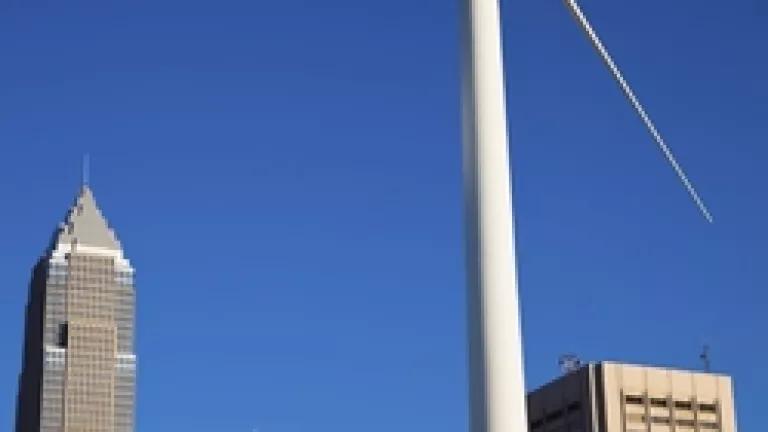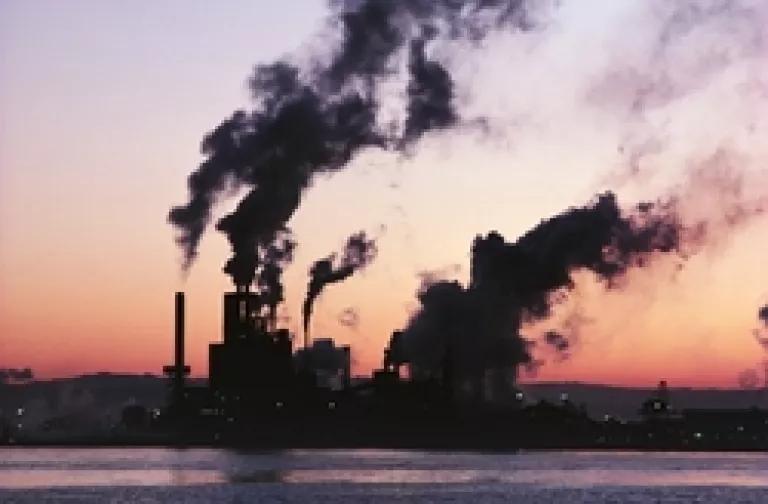
As Governor John Kasich puts the final touches on tonight's State of the State speech, I can only imagine the weight of issues he must consider in addressing the people of Ohio.
There is still much work to be done. We hope his address will unveil policies that help jumpstart the state and create a healthier, cleaner place for Ohioans to work and raise a family.
One win-win proposition would be to chart a clear path for the state's energy future. The first order of business is to reverse last year's decision to freeze the clean energy standards. Energy efficiency and solar and wind are low-cost tools that can ramp up Ohio's economic stability and create healthier communities. Re-asserting Ohio's commitment to these clean energy tools would give the state a much-needed economic boost.
Here are a few next steps to get us there and ensure that Ohio moves forward--rather than backward--in the coming years:
- Double down on energy efficiency, the cheapest and fastest way to improve comfort in our homes and businesses and bring energy-hogging industrial systems into the new century.
Did you know Ohio's energy efficiency programs have saved consumers more than $1.5 billion over the last five years? And these savings are cost-effective; utilities report that energy efficiency yields a 2:1 return on investment. This means more dollars in Ohioans' wallets to spend on their families.
But the benefits don't stop there. According to the American Council for an Energy Efficient Economy, efficiency is significantly lowering wholesale energy prices in Ohio. If we lower demand through efficiency, we lower the price of electricity for everyone.
Efficiency is also cheaper than natural gas and coal-fired power. According to American Electric Power (AEP), their efficiency programs deliver power at a rate of less than 2 cents per kWh, making energy efficiency the "lowest cost alternative."
- Invest in renewable energy like solar and wind, and help create good-paying jobs, lower electric bills and provide cleaner air and water for our communities.
Incorporating more of these zero-emissions resources into Ohio's energy mix can be done at low cost and reliably.
The costs of wind and solar energy have declined by more than 60 percent in the past few years. And a recent assessment by PJM, the largest energy grid operator in the world, found that the electricity system of which Ohio is a part could support a 30% presence for renewables, while maintaining reliability and drastically reducing pollution and costs.
But clean energy also means more jobs. Just recently, AEP estimated that its energy efficiency plan alone will create 4,000 jobs. And this is just one of the four investor owned utilities. In total, Ohio is home to over 400 advanced energy companies that employ over 25,000 Ohioans.
To be sure, the Buckeye State experienced steady growth in clean energy since the standards went into effect in 2009. As recently as 2013, Ohio was leading the country in the number of facilities manufacturing components for wind technology and second in the number of solar equipment providers. A report by the Pew Charitable trusts shows that Ohio attracted $1.3 billion in private clean energy investment from 2009 to 2013 and was predicted to generate an additional $3 billion over the next ten years.
Unfortunately, much of that hard-earned momentum was a casualty of SB 310 when Ohio froze its clean energy standards last year. In 2012, Ohio attracted $187.4 million in private investment for solar power, ranking it 12th nationally. But the state tumbled in 2013 to 20th place ($75.3 million) amid uncertainty over the future of the standards.
The obvious way to reverse this recent downward trend is to reverse the decision to freeze the clean energy standards.

Prioritize healthy families by addressing our climate.
To protect ourselves from the devastating effects of climate change, Ohio must lead the way.
Last summer's water crisis in Toledo is a warning sign, especially if we don't take decisive action to curb dangerous carbon pollution now. Ohio State University predicts the algae blooms on Lake Erie that poisoned Toledo's water supply--caused in part by global warming-fueled severe storms--will become even more common in the years to come.
Not surprisingly, clean water and air is essential to keep the public healthy and inaction can have severe consequences for the next generation of Ohioans.
The Path Forward
These clean energy and public health priorities are just the initial scaffolding for a package of policy goals that Ohio could be crafting.
Take, for example, Speaker of the House Cliff Rosenberger's recently-unveiled "Ohio 2020." This vision for the state outlines long-term objectives that focus on four pillars, one of which would ensure reliable, affordable and safe energy for Ohioans.
We couldn't agree more.
The best way to start paving the way for this energy vision is to reverse the clean energy policy freeze and re-assert our commitment to attracting robust investment in energy efficiency and renewables right here in Ohio. Not only does this investment bolster the tax base, but it ensures cleaner air and water for our communities. It also means good paying jobs that can help strengthen Ohio's middle class, many of whom are looking to get back on their feet again.
Governor, we need these policies to move the state forward. Ohio is poised to add jobs to what could be a fast-growing clean energy sector, lower energy bills, protect our natural resources, and improve the health of vulnerable citizens. But we need your help to get this done.
Affordable, safe, clean power is not a partisan issue. This is a win-win with a demonstrated benefit for Ohio's economy and people.
We stand by ready to assist anyone who wants to get the job done.
